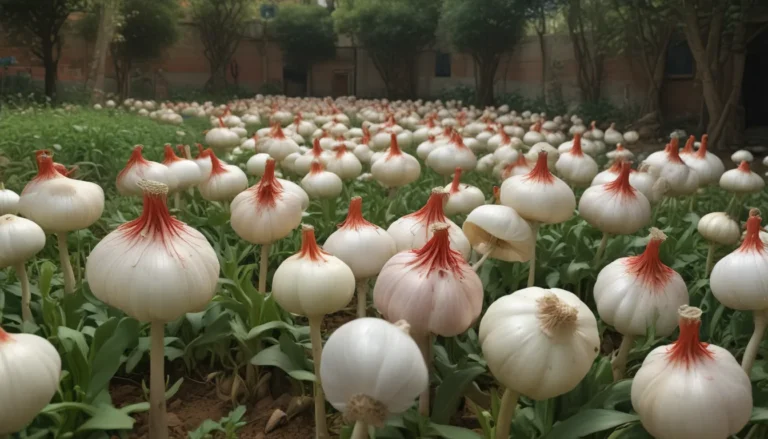A Comprehensive Guide to Growing and Caring for Spirea Bushes

In the world of gardening, the addition of woody shrubs can provide excellent structure to any landscape. One such shrub that stands out for its pretty flowers, luminous foliage, and multi-season colors is the spirea.
Whether you are a seasoned green thumb or a novice gardener, spirea is a popular choice due to its easy care, fast growth, and multi-season beauty. These lovely shrubs are suitable for various landscapes and can be used as groundcovers, in hedging, mass plantings, or even in perennial beds.
Let’s dive into the wonderful world of spirea and explore the best practices for growing these beautiful bushes.
What You’ll Discover
- Cultivation and History
- Propagation
- How to Grow
- Growing Tips
- Pruning and Maintenance
- Cultivars to Select
- Managing Pests and Disease
- Quick Reference Growing Chart
- Best Uses in the Garden
Cultivation and History
The spirea, scientifically known as Spiraea spp., is a genus of over 80 woody shrubs in the Rosaceae family. These plants are native to temperate regions in the Northern Hemisphere, with a significant number of species originating from eastern China.
The name “spirea” is derived from the Greek word “speira,” meaning spiral, which references the unique display of showy, small flowers that these shrubs produce. These hardy deciduous plants showcase simple, lanceolate leaves with toothed margins, arranged alternately along the stems.
There are both spring and summer flowering varieties of spirea, each known for their carefree growth, abundant flowers, and reliable form. Spring bloomers, such as bridalwreath, offer cascading white flowers in April and May. On the other hand, summer bloomers display colorful flowers from June to August, with stunning red foliage in the fall.
Propagation of Spirea Bushes
When it comes to propagating spirea bushes, the most reliable methods include hardwood or softwood cuttings and ground layering. These techniques ensure that you can expand your spirea collection and share the beauty of these shrubs with others.
How to Grow Spirea Shrubs
Growing spirea bushes is a delightful and straightforward task. Here are some key tips to ensure your spirea bushes thrive:
- Plant spirea in soil with average fertility and a neutral or slightly acidic pH.
- Avoid over-fertilization, as spirea are not heavy feeders. A light application of balanced fertilizer in the spring is sufficient.
- Ensure excellent drainage by amending heavy soil with fine grit or sand.
- Choose a full sun to light shade location for optimal growth.
When planting spirea, dig a hole twice as wide and deep as the root ball, sprinkle with bone meal, and water gently. Additionally, provide regular watering until the shrubs are established.
Growing Tips for Healthy Spirea Bushes
To keep your spirea bushes thriving, consider the following tips:
- Opt for full sun to produce more flowers with vibrant colors and brighter fall foliage.
- Allow adequate spacing for the shrubs to grow to maturity.
- Avoid over-fertilization by providing a single feed in the spring.
- Deadhead flowers after blooming to tidy up plants and promote reblooming.
- Ensure proper drainage to prevent waterlogged roots.
Pruning and Maintenance of Spirea Bushes
Regular maintenance and pruning are essential for the health and appearance of spirea bushes. Consider the following guidelines for pruning:
- Spring flowering varieties should be pruned right after blooming, cutting canes to the ground or to a desired length.
- Summer flowering varieties can be pruned in late winter following flowering.
- Remove dead wood, lightly trim to shape, and shear after flowering to encourage reblooming.
Winter care for spirea bushes involves mulching newly planted shrubs to protect roots from the cold. Container plants should be sheltered or insulated to prevent root damage from freezing temperatures.
Spirea Cultivars to Explore
When selecting spirea cultivars for your garden, consider these popular options:
- Japanese (Spiraea japonica): A versatile choice with various flower colors, leaf colors, and sizes.
- Bridalwreath (Spiraea prunifolia): Known for its cascades of white flowers and attractive fall foliage.
- Birchleaf (Spiraea betulifolia): Features clusters of small white flowers and vibrant autumn foliage.
Explore these cultivars to find the perfect fit for your garden and enjoy the beauty they bring throughout the seasons.
Managing Pests and Disease
While spirea bushes are generally hardy, they can encounter occasional pest and disease issues. Common problems include aphids, spider mites, and powdery mildew. Control these issues by:
- Using a strong jet of water or insecticidal soap to manage aphids and spider mites.
- Maintaining proper air circulation and spacing to prevent powdery mildew.
- Applying fungicides if powdery mildew persists.
Quick Reference Growing Chart
Here’s a convenient reference chart for growing spirea bushes in your garden:
- Plant Type: Woody shrub
- Flower/Foliage Color: Pink, purple, rosy red, white flowers with green leaves turning orange, purple, and red in autumn.
- Native to: Temperate regions of the Northern Hemisphere
- Hardiness (USDA Zone): 4-8
- Bloom Time: Spring to summer
- Exposure: Full sun
- Spacing: 2-15 feet
- Height: 2-8 feet
- Spread: Up to 8 feet
- Water Needs: Average
- Pests & Diseases: Aphids, spider mites, powdery mildew
Best Uses in the Garden
Spirea bushes have versatile applications in garden landscapes, including:
- Foundation or specimen plants
- Mixed perennial beds
- Edging or hedges
- Mass plantings for screening purposes
Low-growing varieties of spirea are ideal for smaller gardens, borders, containers, groundcovers, and rockeries. Their flowers also make a lovely addition to floral arrangements.
Conclusion
In conclusion, spirea bushes are a fantastic addition to any garden, offering vibrant colors, beautiful foliage, and multi-season interest. By following the tips and guidelines outlined in this comprehensive guide, you can grow and care for spirea bushes with confidence and success.
Whether you opt for Japanese spirea, bridalwreath spirea, or birchleaf spirea, each cultivar brings its unique charm to your landscape. Explore the world of spirea and enhance your garden with these delightful shrubs.
Remember, with proper cultivation, maintenance, and a little love, your spirea bushes will flourish season after season, bringing joy and beauty to your outdoor space. Happy gardening!
I hope you find this rewritten article informative and engaging. Let me know if you need further assistance.





